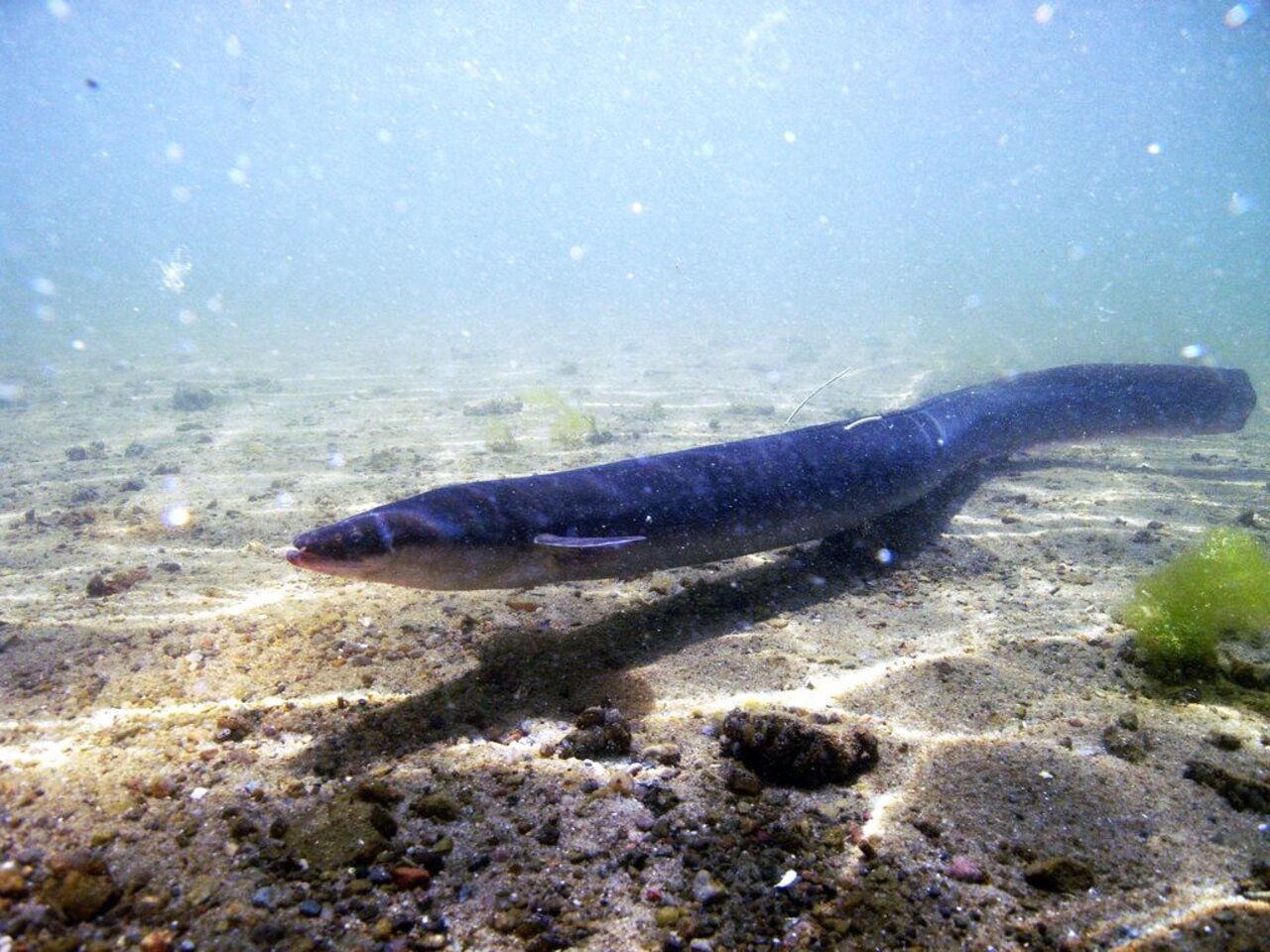Project
How can we improve survival and escapement success of silver eels?

Quantification of eel mortality in German inland waters
The aim of the current European eel stock management is to increase the number of silver eels that escape from inland and coastal waters and contribute to the spawning stock. However, so far the quality of escaping silver eels is disregarded in this context. In order to make realistic valuations of the success of different management measures it is therefore necessary to as well quantify different mortality factors in certain rivers as to make precise estimates of number and quality of escaping silver eels.
Background and Objective
By the “Council Regulation on establishing measures for the recovery of the stock of European eel (EC No1100/2007)” the European Union pursues the goal of reducing anthropogenic eel mortality and increasing the number of escaping silver eels. Thereby the effective spawning stock should be increased substantially. In the project “Quantification of eel mortality in German inland waters” we aimed at quantifying eel mortality in a model river and identifying all main mortality factors. Furthermore, we wanted to assess total silver eel escapement. The project should give insights into how a representative freshwater system contributes to the production of silver eels. The results should be used to improve measures taken in Germany to protect the European eel and to evaluate the efforts made to date.
Approach
We assessed and analyzed eel catch and restocking data from the past 18 years as well as catch composition, fishing mortality and stock characteristics in the model river Schwentine in Schleswig-Holstein. Furthermore, we determined cormorant predation pressure and eel mortality at a hydropower station. The annual escapement of silver eels was assessed and compared to estimates from the eel management plan and to results of the “German Eel Model II”. Spawner quality of escaping silver eels was defined on the basis of body fat content, parasite load and virus infections. In addition, we assessed data about their contaminant load and analyzed their migration behavior after they had left the Schwentine River.
Results
The observed annual silver eel escapement was significantly below numbers that were expected from estimates from the implementation of the European eel regulation for the river basin district Schlei/Trave. Extend and timing of the annual silver eel migration varied strongly and was influenced by river discharge and temperature. Silver eel mortality caused by commercial and recreational fisheries was a multiple of silver eel escapement and it was observed that about 32% of all migrating silver eels were killed at the hydropower station Raisdorf 2 in the lower reaches of the river although a fish ladder and an eel bypass were installed to allow the safe escapement of eels. Our results further show that the “German Eel Model II” is only able to precisely estimate silver eel escapement from inland waters if carefully assessed system specific input data are used for model calculations. Spawner quality of escaping silver eels is impaired by high Anguillicola crassus infection intensities and by EVEX-infections. In addition, tagged silver eels showed strikingly slow migration speeds in the Baltic Sea.
The assessed data are very useful for the implementation of the eel regulation. The comparison of modelled and observed data clearly reveals the risks of escapement estimations that are completely relying on model assumptions. Results of escapement dynamics and their driving factors as well as trash rack eel mortalities at the hydropower station Raisdorf 2 provide a basis for a possible turbine management during annual silver eel escapement periods.
Links and Downloads
Project report: download.ble.de/07HS010/index.html
Thünen-Contact

Involved Thünen-Partners
Involved external Thünen-Partners
- GEOMAR - Helmholtz Zentrum für Ozeanforschung Kiel
(Kiel, Deutschland) - Christian-Albrechts-Universität zu Kiel
(Kiel, Deutschland) -
Stiftung Tierärztliche Hochschule Hannover
(Hannover, Deutschland)
Funding Body
-
Federal Office for Agriculture and Food (BLE)
(national, öffentlich)
Duration
9.2008 - 6.2012
More Information
Project funding number: 2807HS010
Project status:
finished

![[Translate to English:] [Translate to English:]](/media/_processed_/2/9/csm_Embryo-Exp_Gelege_9F_dpf5-200513111619_c8534a8199.jpg)
![[Translate to English:] [Translate to English:]](/media/_processed_/2/9/csm_Embryo-Exp_Gelege_9F_dpf5-200513111619_9027994d44.jpg)





